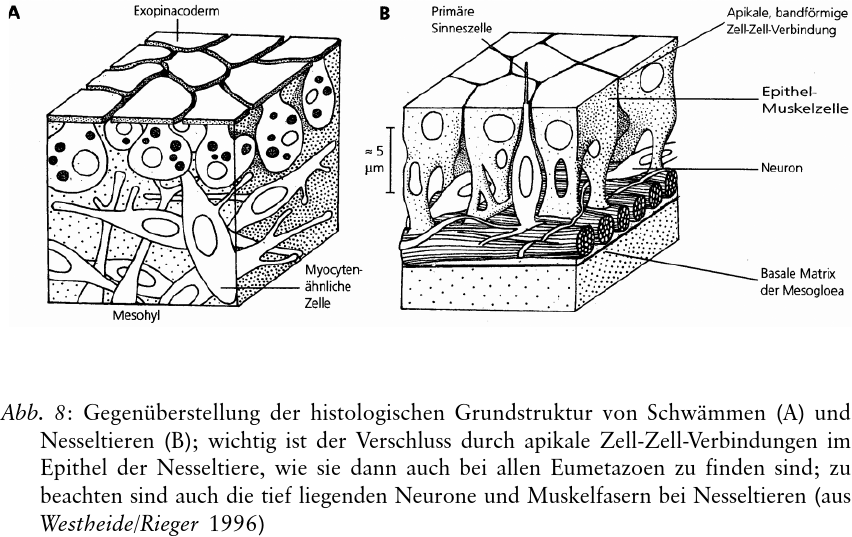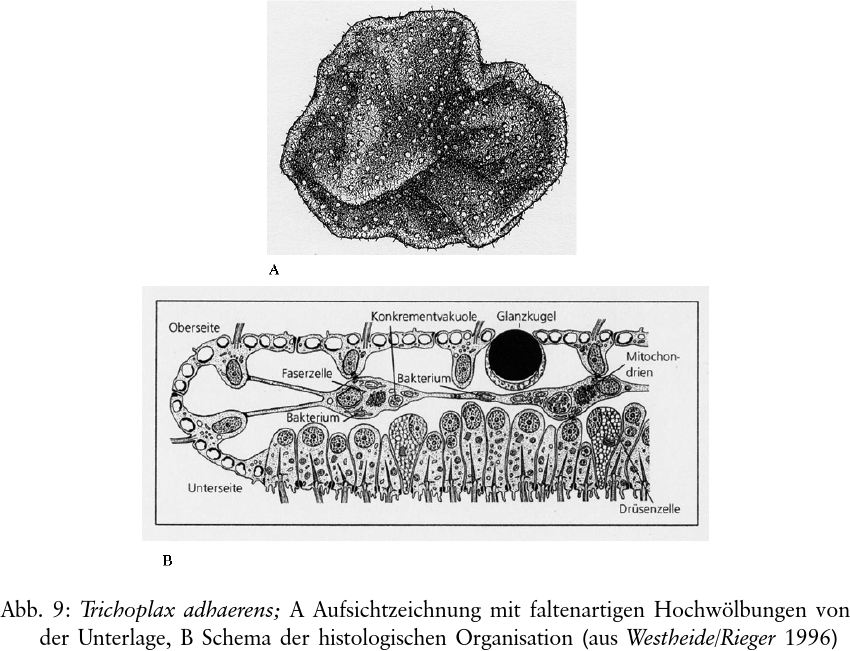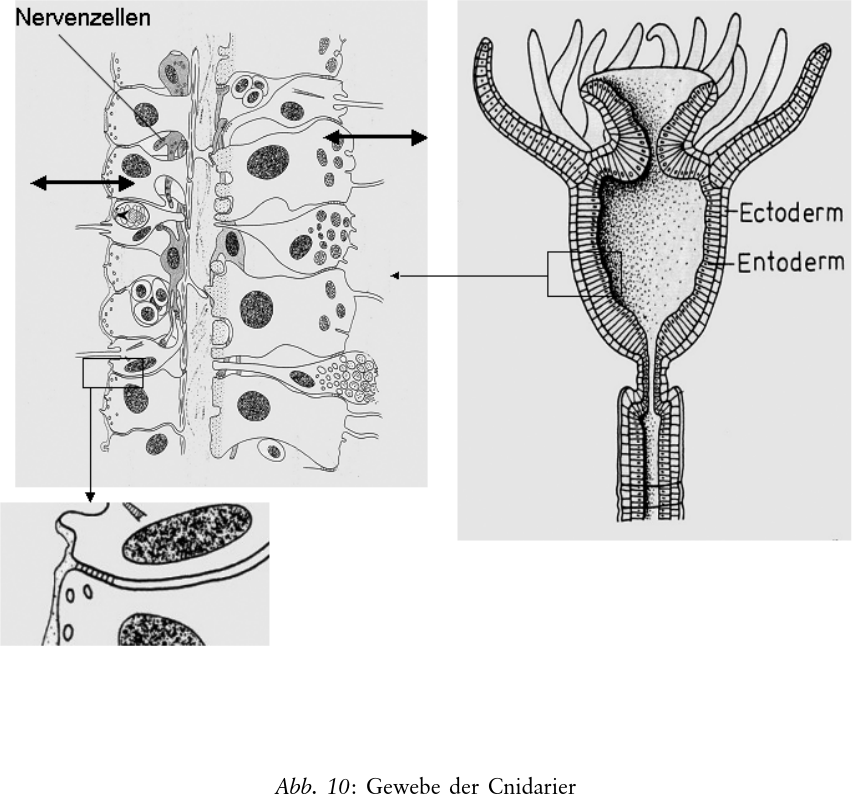Zur Evolution der organismischen Autonomie
Teil 2: Vergleich einiger ursprünglicher Metazoen und Diskussion
Export Article Citation as
- Plain text
- BibTeX
- RIS format
- Download price : € 6.00
Abstract:
Nachdem in Teil 1 des Artikels (Elemente der Naturwissenschaft 2004, Heft 2) die Merkmale von Autonomie in der Organisation der Metazoen dargestellt wurden, sollen jetzt die als besonders ursprünglich angesehenen Stämme mehrzelliger Tiere betrachtet und dabei dargestellt werden, wie sich diese Merkmale evolutiv wahrscheinlich schrittweise gebildet haben. Porifera, Placozoa und Cnidaria werden zumeist als Tiere angesehen, die in ihrer Grundorganisation der vermuteten Basis der Metazoen evolutiv nahe stehen (Cavalier-Smith et al. 1996, Conway Morris 1993, Nielsen 2001, Wainright et al. 1993, Willmer 1990). Im Kladogramm der Abb. 6 sind außer diesen Gruppen noch die Choanoflagellaten als mögliche Ursprungsgruppe der Metazoa hinzugefügt sowie die triploblastische Organisation, aus der ja dann die übrigen mehrzelligen Tiere hervorgegangen sind. [...]





